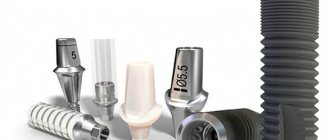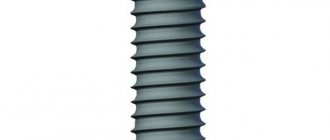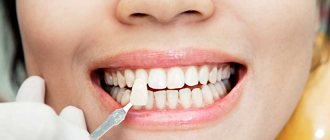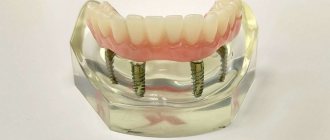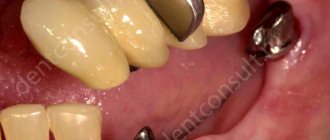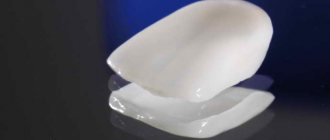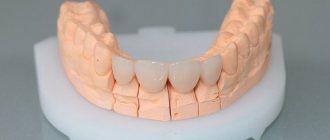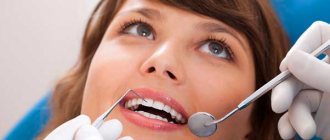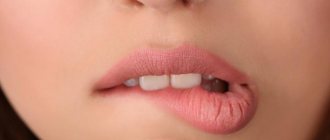The German company POLYTECH Health & Aesthetics has been on the market since 1986 and today is one of the world's largest manufacturers of silicone implants. The Polytech assortment includes a wide selection of various endoprostheses for aesthetic and reconstructive plastic surgery, but the main focus in the product line is on breast implants based on cohesive silicone gel. The company gained its popularity thanks to the optimal combination of physical and aesthetic qualities of the products, as well as full compliance of the presented materials with the requirements and trends of modern plastic surgery.
When is mammoplasty required?
The personal desire of the woman who turns to specialists for breast correction surgery takes precedence. Other reasons include:
INDICATIONS
- exaggerated or underdeveloped breasts;
- unwanted variability of the bust after pregnancy, childbirth and breastfeeding;
- sagging or asymmetry of the mammary glands;
- reconstruction of the mammary gland after its removal against the background of a low-grade tumor;
- the will of a man.
Among the obvious contraindications to surgery are:
CONTRAINDICATIONS
- malignant neoplasms;
- infectious and blood diseases;
- severe course of diseases of internal organs;
- age up to 18 years.
The specialist chooses an implant based on the surgical goals and technique used, the anatomical properties of the patients and their personal preferences.
You can find out whether surgery can be done in the summer with the video:
Cost of POLYTECH implants
The price of POLYTECH implants varies depending on the model and starts from 90 thousand rubles. This does not include the cost of the operation.
Price with surgery in Moscow
| Clinic name | Cost, thousand rubles. |
| Celine | from 300 |
| Frau Clinic | from 350 |
| Sharm Gold | from 400 |
| Doctor plastic | from 370 |
| Bios | from 310 |
Price with surgery in St. Petersburg
| Clinic name | Price, thousand rubles |
| Mediler | from 250 |
| Center for Reconstructive, Restorative and Plastic Surgery | from 200 |
| Breast Health | from 280 |
| Mediler | from 200 |
| GrandMed | from 250 |
Which prostheses are better for mammoplasty?
Round or anatomical? Every woman who dares to get a new bust solves this dilemma. Because these endoprostheses are in great demand among patients of plastic surgeons.
In general, implants differ:
- shape;
- projection;
- volume;
- surface texture.
Implants also differ in the width and height of the base.
The difference between anatomical and round implants is in their shape. And this is clearly visible even in the photo. The first type resembles a swelling drop.
The second option means a round classic bust, obtained by implanting the appropriate type of implant into it.
Round endoprostheses provide the mammary gland with symmetry and preservation of its shape during natural movements made by a woman. They transform the bust into a fuller one and replenish the volume of the upper pole of the breast.
Teardrop implants do not guarantee this. At the same time, the anatomical shape of the grafts gives the new breast a natural appearance.
As recent studies show (conducted by Dr. Charles Rehnquist from Sweden and Professor Mario Ceravolo), visually identifying the breasts of women with round and anatomical implants is difficult even for specialists. This is also explained by the fact that during reprosthetics, the replaced implant often changes shape under the action of the muscle. As a result, a round endoprosthesis turns into an anatomical one and vice versa.
Bra and Bust Size
Can I choose by bra? Choosing a bra is a separate issue. Oddly enough, not all girls know how to choose the right underwear. Moreover, you should not focus on the volume of the cups during endoprosthetics. The number on the underwear label is not an end in itself. The main thing is that the bust sat beautifully.
Moreover, having received a new breast, you will change not only the volume of the cup, but also the volume of the bra strap. Are you surprised? But this is a fact. If you were a modest size 2 with a girth of 68 cm, after augmentation to size 3 you will need a bra with a strap of 72 cm with a C cup. This is the kind of underwear you will feel comfortable in. And the support will be as natural, correct and convenient as possible.
You can try to squeeze a new bust into your favorite 68 cm, but then you will have to buy a four-piece cup. And it will still be uncomfortable. This is the arithmetic for endoprosthetics.
The opposite situation also happens; after augmentation, the bra number remains the same. At the same time, the patient is satisfied with the shape and dimensions of her breasts, and her main complaint to the surgeon is the same number of underwear.
Division of endoprostheses according to the composition of the filling fluid
The outer wafer of any transplant is made of soft silicone and filled with a special gel or isotonic saline liquid, similar in composition to a sterile solution for injections.
Such a mixture, even if it leaks, is harmless to a woman. It will only be absorbed into the blood, just as a liquid comes from an IV into the body to flush the body.
It is also captivating that these implants cost less than other types of endoprostheses. In addition, they are softer to the touch.
But there is also a drawback to using such grafts. With them, the chest is heavier and looks unnatural, and often makes gurgling sounds when moving.
Implants containing a biocompatible cohesin (non-flowing) gel are incomparably lighter. With these endoprostheses, the bust acquires improved elasticity and a natural appearance.
The specific composition of gelatin ensures, when pressing on the bust and when its owner moves, a return to the natural shape of the breast without issuing third-party “chords”.
The disadvantage of this gel is that if it leaks, surgical intervention will be required.
In addition, plastic surgeons have breast implants with a smooth silicone or textured outer surface.
And these endoprostheses for mammoplasty have their advantages and disadvantages. Thus, smooth ones are prone to shifting, and grafts with a textured shell, albeit sometimes, when in contact with the subcutaneous tissue, cause wrinkles.
In 87% of cases, as practice shows, doctors today use silicone implants.
Practicing plastic surgeons, as a rule, do not favor smooth or water-filled implants. The former are prone to slipping and turning over. The latter decrease in volume over time as the liquid evaporates. Due to these reasons, the risk of reoperation increases significantly, and long-term results are not satisfactory.
Benefits of Breast Implants
By choosing the right implant, you can get many benefits:
- effective biocompatibility, sterility. Modern manufacturers produce high-quality products that guarantee minimal risks of implant rejection by the body. Therefore, inflammation is excluded;
- good imitation of natural breasts. Recent technologies have achieved endoprostheses that perfectly replicate the shape of the breast before surgery in visual and tactile terms;
- safe fillers. The best option is cohesive silicone filler. It prevents the leakage and migration of the gel throughout the body in case of damage to the implant;
- minimal risk of endoprosthesis rupture. Typically, the implant is damaged only in the case of piercing wounds or as a result of unskilled actions during puncture of the mammary gland. Therefore, it is imperative to warn the mammologist about installed implants and perform medical punctures under ultrasound control from a qualified specialist.
The main advantage of breast products is their affordable, attractive price.
The cost may depend on the manufacturer, filler, and shape. Professional plastic surgeons advise the fair sex to choose implants based on quality, without paying attention to prices. A woman’s health should come first, as it is more important than individual needs. Therefore, the choice of endoprostheses should be approached with special responsibility, so that the new original bust does not harm the body, can increase the lady’s self-esteem, be realized in life or find a soul mate. You can learn more about breast augmentation surgery in the “Services/Breast Augmentation” section.
Anatomical implants McGahn (USA)
What distinguishes Natrel McGan style 410 anatomical implants from other grafts?
- Their interior is filled with silicone gel.
- The implants have more perpendicular cross-links, which makes the gel stronger.
- Reduced rate of gel diffusion through the wafer with a specialized inner layer.
- The hardness of the filling and bringing the gel to drying is carried out using a special technology.
- The ability to shape the breasts so that they will not subsequently become distorted.
- Wider possibility of selecting this implant for a specific patient - style 410 is manufactured in 12 shapes for all possible volumes.
Natrel McGan in a teardrop shape gently blends into the surrounding tissue, giving the breast a natural appearance. This endoprosthesis is more suitable for recreating a lost breast, as well as for patients whose breasts have visible asymmetry or deformation. The hardness of the implants provides them with an elastic bust.
Among the main manufacturers of implants, including anatomical ones, there are also:
- Nagor (UK) specializes in the production of endoprostheses with a textured wafer and gel filler and offers patients a large selection of sizes and shapes of implants;
- Mentor (USA) – the company has anatomical and round implants filled with cohesin gel, which reduces the risk of developing capsular contracture;
- Polytech (Germany) – endoprostheses from this company are also filled with soft cohesin gel and have a “memory effect” that allows them to maintain their shape after manipulation;
- Eurosilicone (France) is a company that supplies consistently high-quality and safe transplants to Europe and other countries of the world.
Before mammoplasty, each patient should inquire about the features of delicate products produced by these and other manufacturers, and the availability of transplant quality certificates.
BREAST IMPLANT FILLERS
Depending on the filler, there are saline and silicone breast implants.
SALT IMPLANTS
Since the second half of the 19th century, saline breast prostheses began to be used in aesthetic surgery. They are filled with standard water-salt or saline solution (0.9% sodium chloride).
Among the advantages of saline implants:
- physiological water-salt solution is absolutely safe, since its composition is similar to blood plasma;
- Some types of saline prostheses are equipped with a special hole (port), through which, after surgery, you can change the size of the prosthesis - this makes it possible to make a minimal incision and install an empty implant through it, and then fill it to the desired size.
Saline implants have more disadvantages than advantages:
- they are very soft to the touch;
- Over time, the saline solution “sweats” through the shell, causing the implant to become smaller in volume;
- 9-11 months after installation, the salt in the saline solution begins to crystallize, and its crystals can damage the shell;
- during active physical movements, the contents of endoprostheses may “gurgle”;
- have poor resistance to mechanical damage.
SILICONE BREAST IMPLANTS
When creating modern breast prostheses, the following main types of silicone (gel) fillers are used: 1. Hydrogel. 2.Highly cohesive gel. 3.Soft touch.
Of all silicone prostheses, it is implants with hydrogel that create the most naturalness and softness of the breast when touched. But after a certain time after the operation, biological degradation occurs with the hydrogel - it dissolves. In addition, in case of injury, it can leak out, although it is absolutely harmless to the body.
The highly cohesive gel is quite dense (the consistency resembles marmalade), so breasts with such a prosthesis are firmer to the touch. Implants with this filler retain their shape perfectly, and the possibility of the formation of “waves” is minimal. Even if the shell ruptures, the filler will not leak out of it; its penetration into nearby tissues is completely excluded.
The most innovative filler is Soft touch, which has an elastic consistency. In the event of a rupture of the prosthesis shell, this gel does not leak out, and there is also no sweating through the shell. A breast with such an implant, when touched, creates a feeling of maximum naturalness.
Gel fillers have many advantages:
- absolute sterility;
- inertness for the human body;
- high resistance to mechanical damage;
- the risk that after rupture of the shell the gel will penetrate into the surrounding tissues is minimal;
- Breasts with such implants feel almost indistinguishable from natural breasts.
Silicone implants have few disadvantages:
- the integrity of the prosthesis can only be checked using magnetic resonance imaging or ultrasound if the examination is performed by an experienced specialist;
- The installation incision must be longer than in the case of a saline implant (4-5 cm).
Polyurethane anatomical two-gel implants
Polyurethane as a coating has endowed endoprostheses with excellent characteristics, which are ideally suited for mammoplasty, solving the problem of capsular contracture.
This is due to the fact that the polyurethane coating in tandem with the main cohesin gel has high elasticity and the ability to remember the intended shape of the breast.
Therefore, after the use of such implants, the incidence of capsular contracture sometimes does not exceed 1% of cases 10 years after mammoplasty.
Another advantage is assigned to the polyurethane coating in the form of its “ability” to adhere (stick) to fabrics. And then the implant is not subject to displacement/rotation, which leads to patients obtaining breasts that are natural and soft to the touch.
The before and after photos clearly show how such an implant creates a natural, streamlined shape with a gradual narrowing in the upper part of the chest. But it is worth knowing that polyurethane endoprostheses can cause a longer (up to a year) rehabilitation period. During this time, their shape may change, and swelling persists for up to six months.
HOW TO CHOOSE BREAST IMPLANTS
After reading this article, it will be easier for women planning to undergo augmentation mammoplasty to make the right choice. Although, you should still trust a plastic surgeon in this matter. Usually, they quite reasonably recommend installing silicone endoprostheses with a textured or polyurethane shell. As for the size of the prosthesis, it is selected after 3D computer modeling, taking into account the woman’s wishes and the following structural features of her body:
- height and general proportions;
- chest size;
- natural volume of the mammary glands;
- presence/absence of ptosis or breast tubularity;
- interthoracic distance;
- areola size;
- elasticity of fabrics.
Modern breast implants have a very long service life: for saline implants it is 18 years, and for silicone implants it is unlimited. The need to replace a breast prosthesis may arise when:
- complications: fibrocapsular contracture, displacement, rotation, change in shape;
- significant decrease or increase in body weight;
- changes in breast shape that occur after pregnancy and breastfeeding;
- rupture of the implant shell.
Who should choose which implants?
Anatomical implants are more suitable for those women who:
- naturally thin physique;
- narrow chest;
- insignificant volume of natural breast tissue;
- pronounced drooping of the breasts due to their natural miniature size, breastfeeding or weight loss.
In these cases, anatomical implants will transform the bust to a natural one. Anatomists will also help in correcting certain types of breast asymmetry.
Young patients with developed mammary glands can safely choose round implants if they need to increase their bust by 1 size.
How is the operation performed?
Implants are installed through the following approaches:
- submammary - through the inframammary fold;
- periareolar - through the areola;
- axillary - through the armpit.
Which method is preferable in a particular case is determined depending on the anatomical features of the breast structure.
The following describes an operation in which the material is placed submammary.
Stages:
- The surgical field is marked. Then the patient is given anesthesia, and the intervention site is limited with sterile sheets.
- Then an incision is made.
- The next step is to form a pocket. During the intervention, coagulation of blood vessels occurs to stop bleeding. A special electric scalpel is used to separate tissues.
- An implant is installed in the formed pocket. It is then carefully distributed under the muscle or mammary gland.
- Finally, a drainage is installed to drain the wound fluid, and sutures are applied in parallel.
Parameters of breast prostheses
The size of each implant, including anatomical ones, is calculated in milliliters. This means that for 1 chest size there is a filling volume of 150 ml.
The size of the endoprosthesis is added to the natural girth of the bust. Thus, a woman with size 2 acquires breasts with indicators of size 4.
In addition, there are adjustable and fixed implant sizes. The former are characterized by the introduction of filler into the membrane during surgery after implantation of grafts.
This allows the surgeon to make adjustments to breast size during the surgical period, increasing or decreasing the volume of the planned bust.
The peculiarity of the latter is that after implantation into the mammary gland, their size cannot be changed.
Laboratory tests
Laboratory studies revealed that the use of a micropolyurethane shell helps reduce the risk of postoperative complications. In this case, the probability of implant displacement is reduced to zero. After its installation, fibroblasts grow into the polyurethane foam matrix, which prevents the formation of capsular contracture. This was proven through a study in which 1257 patients were observed for 18 years. During this period, complications occurred in only 1% of women.
Endoprosthesis profiles
This indicator of implants, anatomical and round, is nothing more than the percentage ratio of the projection values of the graft to the size of its base.
Thus, a high-profile breast prosthesis has a larger projection and a smaller base.
In other words, the profile indicator indicates the plumpness (high profile) or flatness (low profile) of a particular implant.
At the same time, manufacturers do not agree on which endoprostheses are considered high- or low-profile. This is explained by the fact that manufacturers also use different types of fillings and shells in the implants they produce.
Using the example of McGhan implants, it is proposed to take into account the following profile indicators:
- within 32% - low profile;
- 32 - 38% - medium profile;
- more than 38% are high-profile.
Experience shows that a more beautiful breast shape is obtained with medium-profile implants.
After implantation, endoprostheses last a lifetime if there are no complications. However, implants can be removed at any time if the woman so desires. Implants cannot be replaced every 10-20 years. It is also important that implants do not interfere with breastfeeding. The gland tissue is not damaged during placement and does not have a toxic effect on the quality of milk.
Dental implantation from RUB 32,000.
| Service name and description | Price |
| Installation of a classic implant ROOTT FORM (Switzerland, Trate AG) The price includes: diagnostics, CT, 3D planning, implant, gum former, doctor’s work, postoperative examinations throughout the year, including CT and OPTG images, lifetime warranty More information about the method Free consultation | 32,000 rub. 27,000 rub. |
| Installation of a classic ROOTT implant with an adaptation crown (Switzerland, Trate AG) The price includes: diagnostics, CT scan, 3D planning, implant, gum former, aesthetic adaptation crown (installed on the same day), doctor’s work, postoperative examinations throughout the year, including CT and OPTG images, lifetime guarantee More information about the method Free consultation | 52,000 rub. |
| Simultaneous installation of a ROOTT implant (Switzerland, Trate AG): together with tooth extraction and an adaptation crown The price includes: diagnostics, CT scan, 3D planning, tooth extraction, implant, gum former, doctor’s work, postoperative examinations for a year, including CT and OPTG images, lifetime guarantee More information about the method Free consultation | RUB 55,500 |
| Installation of a one-stage implant (Switzerland, Trate AG) with an adaptation crown The price includes: diagnostics, CT, 3D planning, implant, aesthetic adaptation crown, doctor’s work, postoperative examinations for a year, including CT and OPTG images, lifetime guarantee More information about the method Free consultation | 44,000 rub. 38,000 rub. |
| Installation of a one-stage multi-unit implant with screw fixation (Switzerland, Trate AG) with an adaptation crown The price includes: diagnostics, CT, 3D planning, implant, aesthetic adaptation crown, doctor’s work, postoperative examinations for a year, including CT and OPTG images, lifetime guarantee More information about the method Free consultation | 50,000 rub. |
| Installation of a classic Nobel implant (Sweden, Nobel Biocare) The price includes: anesthesia, implant, gum former, doctor’s work, postoperative examinations for a year, including OPTG image, warranty Free consultation | 60,000 rub. |
| Installation of a classic Nobel implant (Sweden, Nobel Biocare) with an adaptation crown The price includes: anesthesia, implant, gum former, abutment, adaptation crown, doctor’s work, postoperative examinations for a year, including OPTG image, warranty Free consultation | 85,000 rub. |
| One-stage complex implantation for completely edentulous one jaw, including an adaptive prosthesis (combination of 6-12 COMPRESSIVE, BASAL implants of the ROOTT system (Switzerland, Trate AG) on a metal frame with cement fixation. The prosthesis is installed within 1-3 days. Lifetime warranty on implantation, 1 year on adaptive prosthesis The price includes: diagnostics, CT scan, 3D planning, pre-implantation tests, anesthesia, tooth extraction (according to indications), implants (regardless of quantity), adaptive metal-plastic prosthesis, doctor’s work, postoperative examinations throughout the year, including CT and OPTG images More information about the method Free consultation | RUB 265,000 230,000 rub. |
| One-stage complex implantation for completely edentulous one jaw, including an adaptive prosthesis (combination of 6-12 COMPRESSIVE, BASAL implants of the ROOTT system (Switzerland, Trate AG) on a titanium frame with cement fixation. The prosthesis is installed within 1-3 days. Lifetime warranty on implantation, 1 year on adaptive prosthesis The price includes: diagnostics, CT scan, 3D planning, pre-implantation tests, anesthesia, tooth extraction (according to indications), implants (regardless of quantity), adaptive metal-plastic prosthesis, doctor’s work, postoperative examinations throughout the year, including CT and OPTG images More information about the method Free consultation | RUB 295,000 |
| One-stage complex implantation with complete edentia of both jaws, including an adaptive prosthesis (combination of 12-24 COMPRESSIVE, BASAL implants of the ROOTT system (Switzerland, Trate AG) on a metal frame with cement fixation. The prosthesis is installed within 1-3 days. Lifetime warranty on implantation, 1 year on adaptive prosthesis The price includes: diagnostics, CT scan, 3D planning, pre-implantation tests, anesthesia, tooth extraction (according to indications), implants (regardless of quantity), adaptive metal-plastic prosthesis, doctor’s work, postoperative examinations throughout the year, including CT and OPTG images More information about the method Free consultation | 480,000 rub. |
| One-stage complex implantation with complete edentia of both jaws, including an adaptive prosthesis (combination of 12-24 COMPRESSIVE, BASAL implants of the ROOTT system (Switzerland, Trate AG) on a titanium frame with cement fixation. The prosthesis is installed within 1-3 days. Lifetime warranty on implantation, 1 year on adaptive prosthesis The price includes: diagnostics, CT scan, 3D planning, pre-implantation tests, anesthesia, tooth extraction (according to indications), implants (regardless of quantity), adaptive metal-plastic prosthesis, doctor’s work, postoperative examinations throughout the year, including CT and OPTG images More information about the method Free consultation | 495,000 rub. |
| One-stage complex implantation for completely edentulous one jaw, including an adaptive prosthesis on a titanium frame supported by 6-12 implants of the ROOTT system (Switzerland, Trate AG) multi-unit screw-fixed The price includes: diagnostics, CT scan, 3D planning, pre-implantation tests, anesthesia, tooth extraction (according to indications), implants (regardless of quantity), adaptive metal-plastic prosthesis, doctor’s work, postoperative examinations throughout the year, including CT and OPTG images More information about the method Free consultation | RUB 325,000 |
| One-stage complex implantation for complete edentia of both jaws, including an adaptive prosthesis on a titanium frame supported by 12-24 implants of the ROOTT system (Switzerland, Trate AG) multi-unit screw-fixed The price includes: diagnostics, CT scan, 3D planning, pre-implantation tests, anesthesia, tooth extraction (according to indications), implants (regardless of quantity), adaptive metal-plastic prosthesis, doctor’s work, postoperative examinations throughout the year, including CT and OPTG images More information about the method Free consultation | 590,000 rub. |
| Complex for 1 jaw on mini-implants: The price includes: acrylic prosthesis with fastening on four mini implants, 4 MDI implants, 4 matrices, doctors’ work, diagnostics, CT scan, 3D planning, postoperative examinations throughout the year, including CT scan, OPTG, warranty) More information about the method Free consultation | 150,000 rub. |
| Complex for 1 jaw with a removable denture on 4 (6) ROOTT implants (Switzerland, Trate AG): The price includes: removable acrylic prosthesis with fastening on 4 (6) implants, 4-6 classic implants, doctors’ work, 3D planning, CT scan, postoperative examinations throughout the year, including CT scan, OPTG, warranty) More information about the method Free consultation | 197,000 rub. |
| Complex for 1 jaw on 4 implants multi-unit ROOTT (Switzerland, Trate AG) with a fixed prosthesis: The price includes: fixed metal-plastic adaptive prosthesis with mounting on multi-unit implants, 4 multi-unit implants, pre-implantation tests, diagnostics, 3D planning, CT scan, doctors’ work, postoperative examinations throughout the year, including CT scan, OPTG, warranty) More information about the method Free consultation | 280,000 rub. |
| Complex for 1 jaw on 4 Nobel implants (Sweden, Nobel Biocare) with fixed prosthesis ALL ON 4: The price includes: fixed metal-plastic prosthesis with fastening on implants, 4 implants, doctors’ work, postoperative examinations for a year, including an OPTG image, warranty) More information about the method Free consultation | 350,000 rub. |
| One-stage complex implantation for completely edentulous 1 jaw, including a ceramic-composite prosthesis, put on on days 3-4, combination of 6-12 screw-fixed implants, ROOTT system (Switzerland, Trate AG) No re-prosthetics required The price includes: fixed ceramic-composite prosthesis with multi-unit attachment, diagnostics, CT scan, 3D planning, pre-implantation tests, implants, doctors’ work, postoperative examinations throughout the year, including CT scan, OPTG, warranty) Free consultation | 580,000 rub. |
| Removal of a classic implant installed in another clinic The price includes: anesthesia, all manipulations and materials, all further examinations throughout the year Free consultation | 7,000 rub. |
| Removal of a plate implant installed in another clinic The price includes: anesthesia, all manipulations and materials, all further examinations throughout the year Free consultation | 35,000 rub. |
| Open sinus lift, bone grafting (for 1 zone, excluding material cost) The price includes: all surgical procedures and materials, except bone substitute and membrane, further examinations throughout the year More information about the method Free consultation | 35,000 rub. |
| Sinus lifting in the area of one tooth (excluding the cost of material) The price includes: all surgical procedures and materials, except bone substitute and membrane, further examinations throughout the year More information about the method Free consultation | 10,000 rub. |
| Directed regeneration in the area of 1 tooth (excluding material cost) The price includes: all surgical procedures and materials, except bone substitute and membrane, further examinations throughout the year More information about the method Free consultation | 10,000 rub. |
| Guided bone tissue regeneration (for 1 zone excluding material cost) The price includes: all surgical procedures and materials, except bone substitute and membrane, further examinations throughout the year More information about the method Free consultation | 35,000 rub. |
| Osteoplasty with splitting of the alveolar ridge (for 1 zone excluding the cost of material) The price includes: all surgical procedures and materials, except bone substitute and membrane, further examinations throughout the year More information about the method Free consultation | 35,000 rub. |
| Membrane BioGide 20*25 (1 pc.) The price includes: all surgical procedures and materials, further examinations throughout the year More information about the method Free consultation | 16,000 rub. |
Open
Reviews from women about anatomical implants
The desire to insert implants into the mammary glands and forget about it forces potential patients of plastic surgeons to get acquainted with the reviews of those who have experienced the delights, and possibly the negative, after the operation.
EUGENIYA:
“I haven’t given birth yet, so it took me a long time to get ready to see a plastic surgeon.
I was afraid that the seams would stand out. But the doctor did everything perfectly. Taking into account my personal data, he performed an operation through the armpit using anatomical implants.
A year has already passed, and there are no problems: no scars, no inconvenience from endoprostheses, and the volume is natural. My husband is delighted and I’m happy.”
NATALIA:
“I applied for mammoplasty 1.5 years ago.
Then I was 43, I didn’t need to give birth/feed a child (the children were already grown). I “ordered” slightly raised breasts, which differ from the natural ones by one size in the direction of increase. I chose round implants, although I should have opted for teardrop-shaped prostheses - they are better.
The surgery went without complications, but it took a month of getting used to the new breast.”
RAISA:
“After 2 births, my breasts became worn out.
And I really wanted men to stop their admiring glances at my bust! I found a good clinic with a respected doctor, and now my dreams have become a reality. Even my husband forgot that he was against my campaign for new breasts.”
You can see the results of mammoplasty in the following video:
By choosing anatomical implants, women are confident of obtaining a perfect breast shape. And for the result to be worthy, you should rely on a plastic surgeon.
Requirements for materials for implants
When looking for an answer to the question of what material to make a dental implant from, you should know that this same material must meet several requirements:
- be durable: to withstand chewing pressure (sometimes exceeding 100 kilograms per square centimeter), and also not to destroy the bone with its mass,
- easy to process at the production stage, maintain a given shape throughout its entire service life,
- do not deteriorate (do not corrode) from the action of the biological environment (saliva, blood, etc.),
- do not exhibit toxic, allergenic and carcinogenic effects on the body,
- do not provoke an increase in galvanic currents when interacting with metal structures installed in the patient’s mouth.
These are the basic requirements that can be applied to materials for dental implants - and, of course, every self-respecting manufacturer understands this. As a result, there are not many options left as to what to make a dental implant from.
NEW TEETH AND SMILE IMMEDIATELY!
Dental implantation with immediate loading of a prosthesis FOR 1 TOOTH: RUB 35,000. Save RUB 10,000. FOR 1 JAW: 265,000 rub.
Free consultation with an implantologist or write to us
